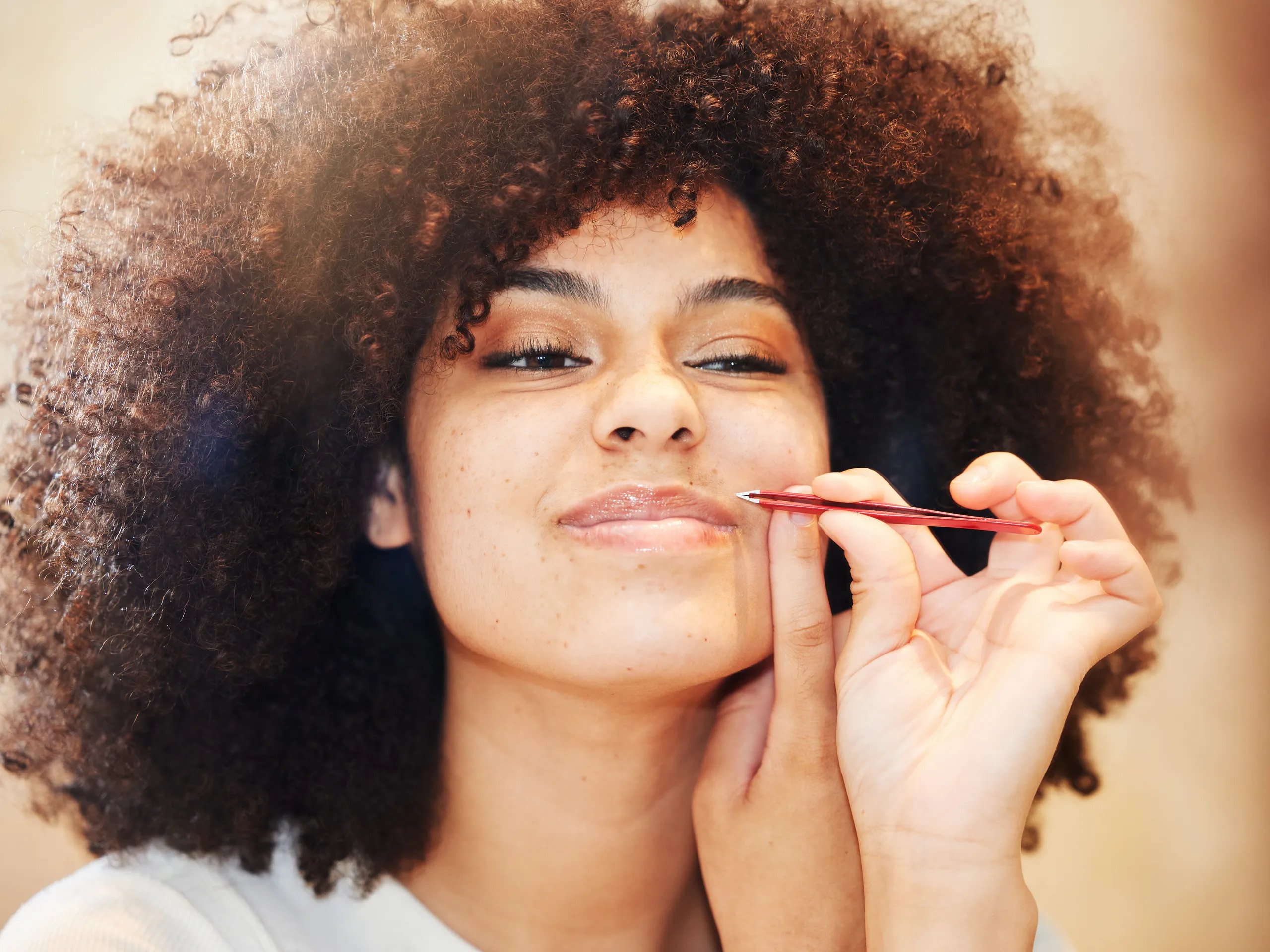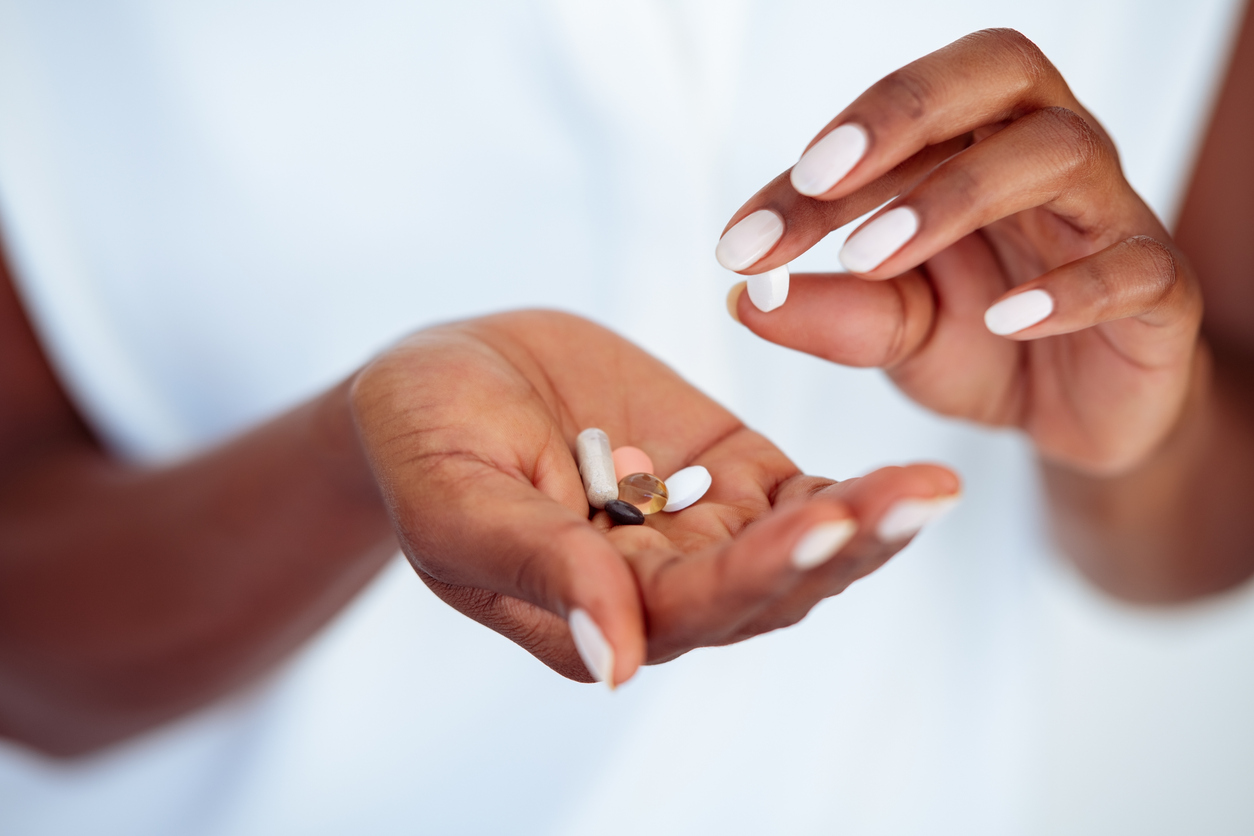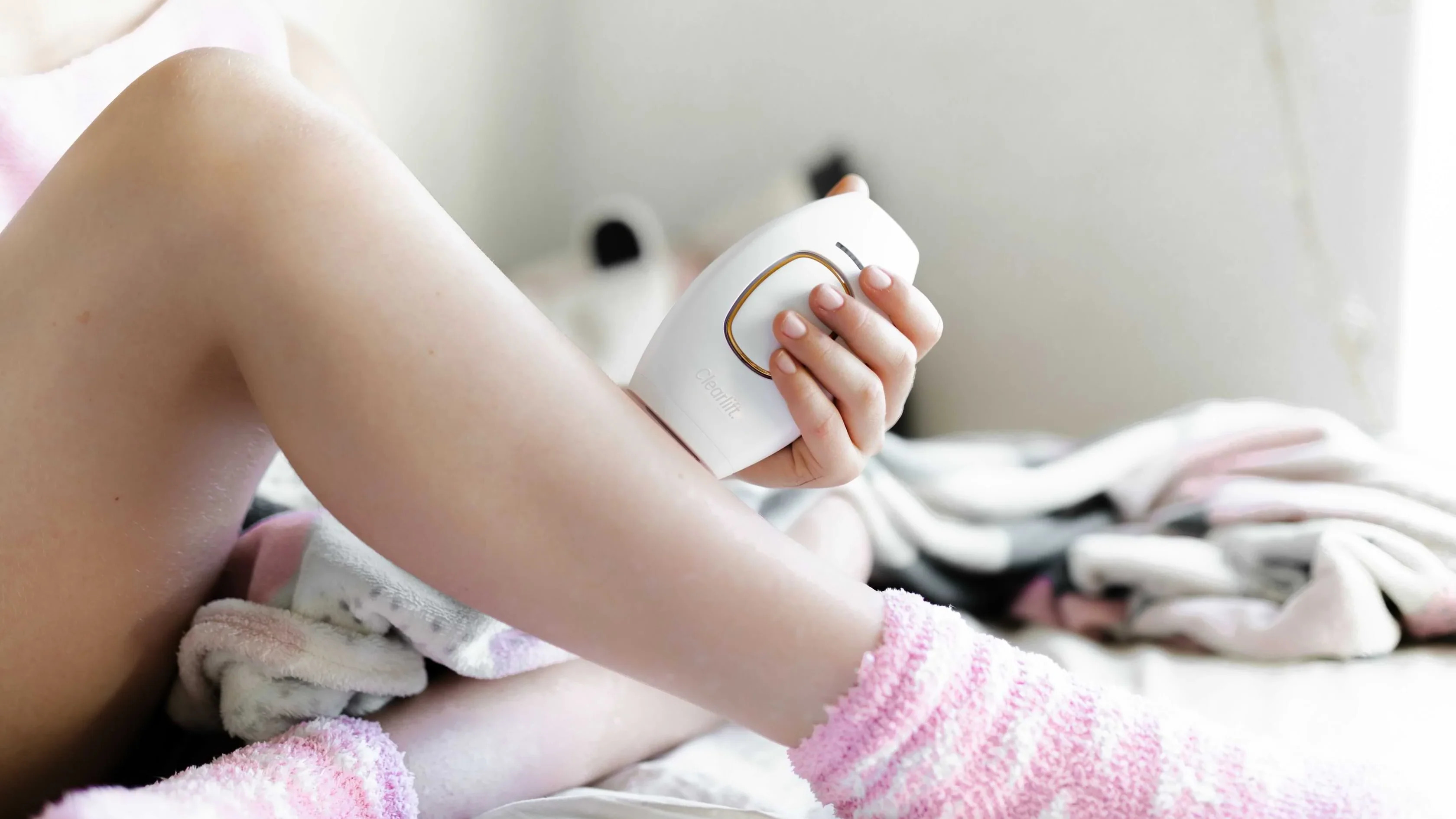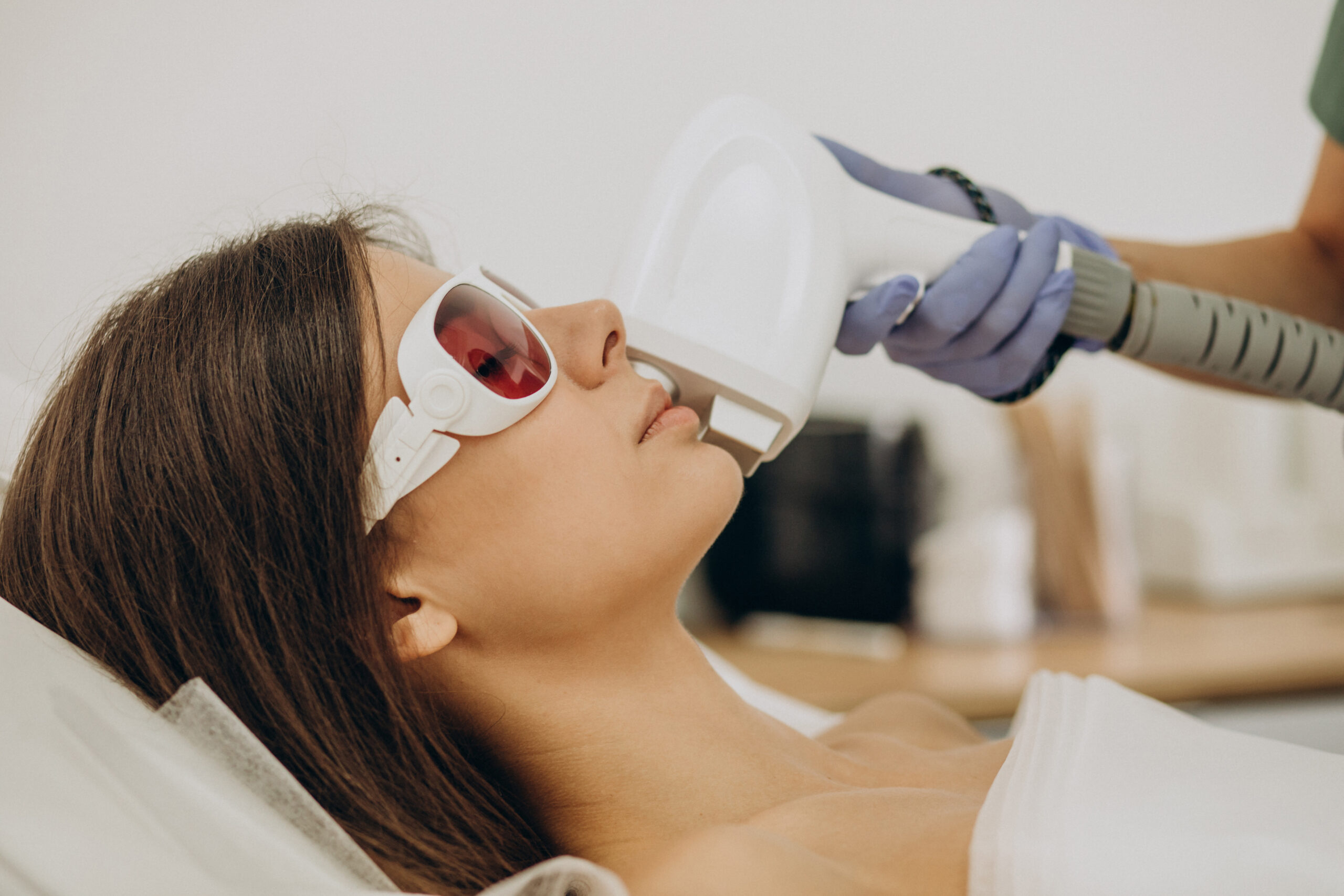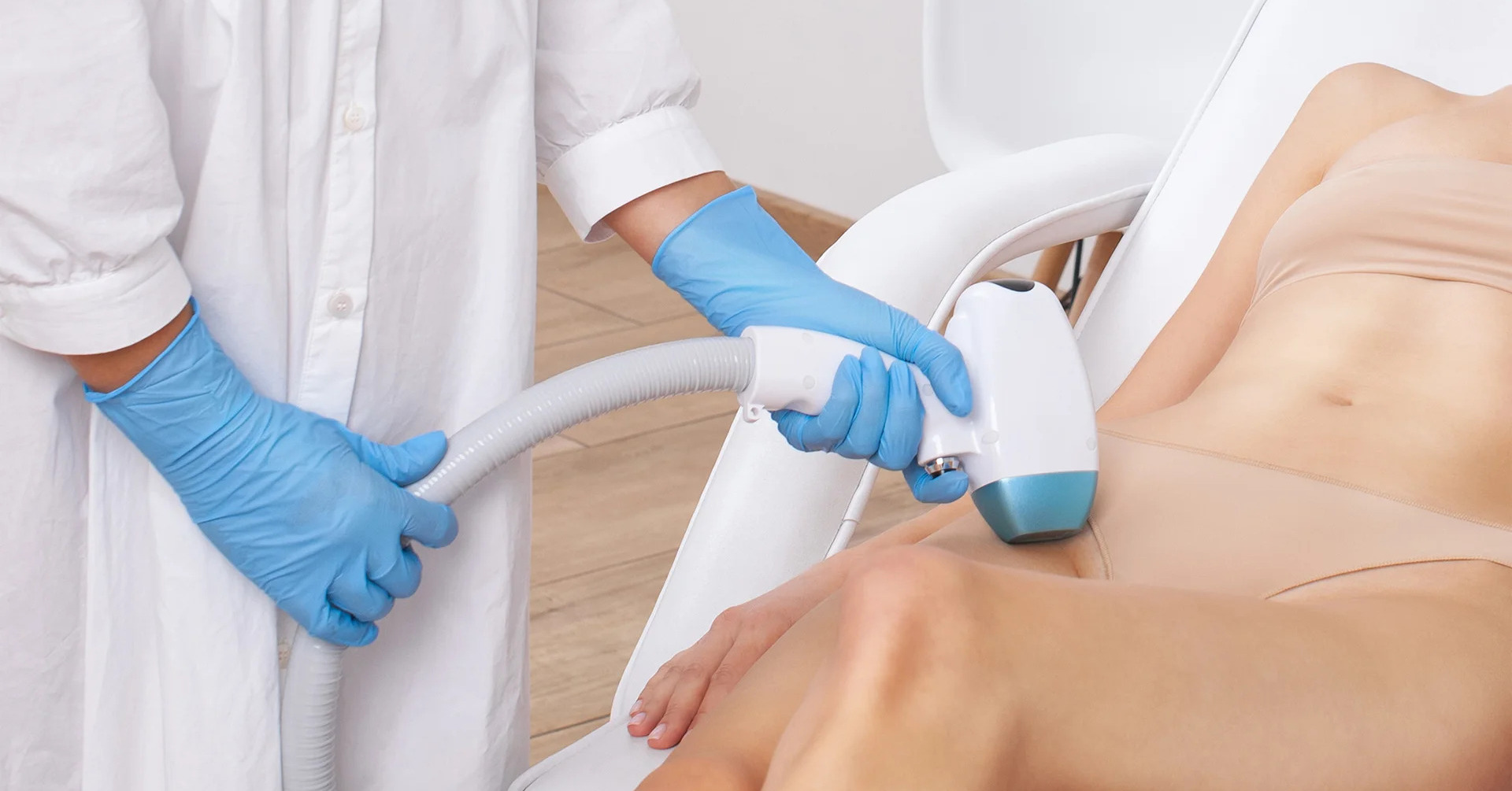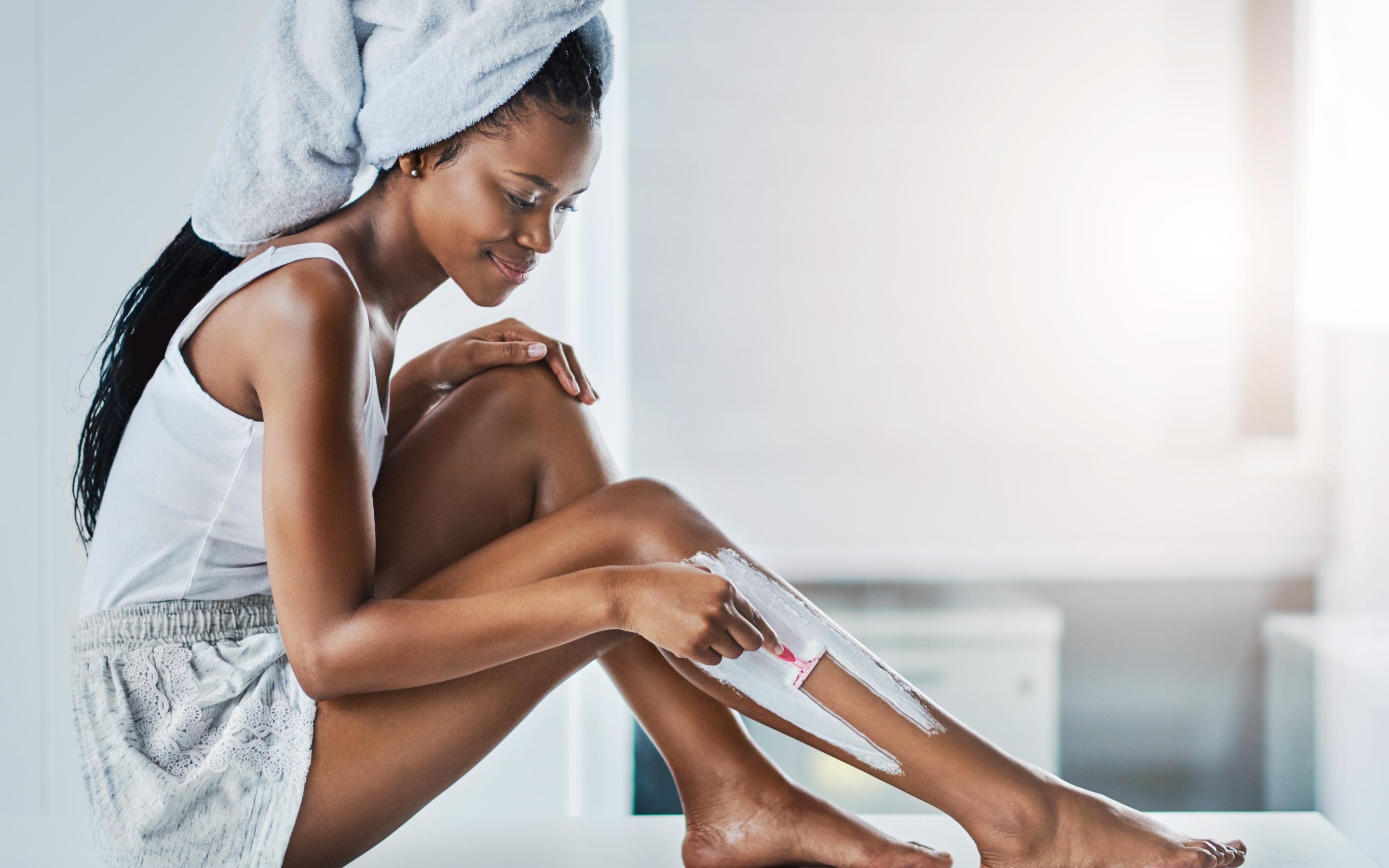Home>How-to Guides>For Women>How To Treat Acne After Laser Hair Removal
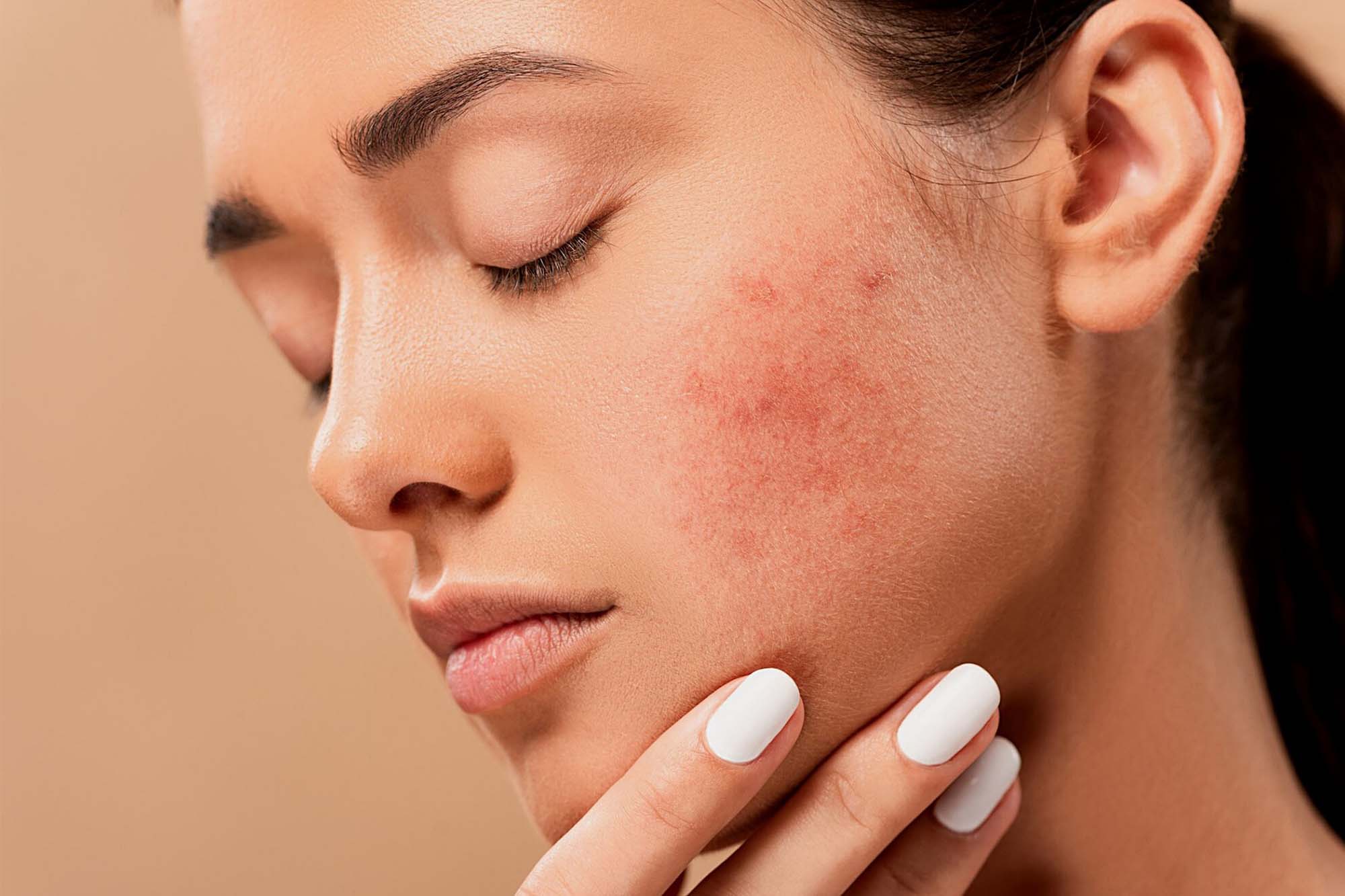

For Women
How To Treat Acne After Laser Hair Removal
Modified: August 2, 2023
Learn effective ways to treat acne after laser hair removal specifically for women. Say goodbye to post-treatment breakouts and achieve smooth and clear skin.
(Many of the links in this article redirect to a specific reviewed product. Your purchase of these products through affiliate links helps to generate commission for Under-tec.com, at no extra cost. Learn more)
Table of Contents
- Introduction
- Understanding Acne After Laser Hair Removal
- Causes of Acne Breakouts
- Preventing Acne After Laser Hair Removal
- Treating Acne After Laser Hair Removal
- Home Remedies for Acne After Laser Hair Removal
- Over-the-Counter Treatments for Acne
- Prescription Medications for Acne After Laser Hair Removal
- Professional Treatments for Acne
- Conclusion
Introduction
Welcome to our comprehensive guide on how to treat acne after laser hair removal. If you’ve recently undergone laser hair removal, you may be experiencing an unexpected side effect – acne breakouts. While laser hair removal is an effective and popular method for achieving smooth, hair-free skin, it can sometimes lead to temporary acne flare-ups.
Acne is a common skin condition that occurs when hair follicles become clogged with oil, dead skin cells, and bacteria. While laser hair removal targets the hair follicles to inhibit hair growth, it can also disrupt the skin’s natural balance and contribute to acne formation.
In this guide, we will explore the causes of acne after laser hair removal and provide you with practical tips and effective treatments to prevent and address breakouts. Whether you’re considering laser hair removal or have already undergone the treatment, this guide will equip you with the knowledge you need to maintain clear and radiant skin.
It’s important to note that everyone’s experience with acne after laser hair removal will vary. Some individuals may not experience any breakouts at all, while others may have more pronounced acne flare-ups. This guide aims to provide general information and solutions, but it’s always recommended to consult with a dermatologist for personalized advice.
Now, let’s dive into the causes of acne after laser hair removal and explore how to prevent and treat breakouts effectively.
Understanding Acne After Laser Hair Removal
Acne after laser hair removal is a common concern for many individuals. While the exact mechanism behind acne formation following the procedure is not fully understood, there are several factors that may contribute to its occurrence.
During laser hair removal, intense beams of light are directed at the hair follicles, effectively destroying them. While this process is effective in removing unwanted hair, it can disrupt the delicate balance of the skin’s sebaceous glands. These glands are responsible for producing sebum, an oily substance that helps moisturize the skin. When the balance of sebum production is disrupted, it can lead to the development of acne.
In addition to the disruption of sebum production, laser hair removal can also cause temporary inflammation in the treated areas. This inflammation can further contribute to the development of acne by increasing the likelihood of clogged pores and bacterial growth. It’s important to note that the severity of acne after laser hair removal varies from person to person, with some individuals experiencing only mild breakouts while others may experience more persistent and severe acne.
It’s worth mentioning that acne after laser hair removal is usually temporary and tends to subside on its own within a few weeks to a couple of months. However, if you find that your acne persists or worsens, it’s advisable to seek professional advice from a dermatologist.
Now that we have a better understanding of why acne may occur after laser hair removal, let’s explore the potential causes of breakout and how to effectively prevent and address this concern.
Causes of Acne Breakouts
Acne breakouts can occur after laser hair removal due to several underlying causes. Understanding these causes can help you take proactive steps to prevent and manage acne effectively.
1. Hormonal Imbalance: The hormonal changes that occur after laser hair removal can trigger an increase in sebum production. This excess sebum, combined with dead skin cells and bacteria, can clog the hair follicles and lead to acne breakouts.
2. Skin Sensitivity: Laser hair removal can cause temporary skin sensitivity, making the treated areas more prone to inflammation and acne formation. If you have sensitive skin, you may be more susceptible to acne breakouts after the procedure.
3. Bacterial Infections: Bacteria present on the skin can enter the hair follicles during or after laser hair removal, leading to infections and subsequent acne breakouts. It’s essential to maintain good hygiene practices and keep the treated areas clean to prevent bacterial growth.
4. Excessive Sweating: Sweating can contribute to clogged pores and acne breakouts. After laser hair removal, sweat can accumulate in the treated areas, providing an ideal environment for bacteria to thrive and cause acne.
5. Improper Aftercare: Inadequate post-treatment care can also contribute to acne breakouts. Failure to follow the recommended skincare routine or using harsh products on the treated areas can disrupt the skin’s balance and trigger acne formation.
It’s important to note that these causes are not exhaustive, and each individual’s experience may vary. Some people may be more prone to acne breakouts due to their skin type, while others may experience little to no breakouts at all. Understanding the potential causes can help you identify what may be contributing to your acne and take appropriate steps to manage it.
Now that we’ve explored the causes of acne breakouts after laser hair removal, let’s move on to the next section, where we’ll discuss effective strategies for preventing acne formation.
Preventing Acne After Laser Hair Removal
While acne breakouts after laser hair removal can be frustrating, there are several measures you can take to minimize the risk and prevent acne formation. By following these preventive strategies, you can maintain clear and healthy skin post-treatment.
1. Follow a Gentle Skincare Routine: Opt for a gentle cleanser and moisturizer that are suitable for your skin type. Avoid harsh and abrasive products that can irritate the skin and trigger acne breakouts. Be sure to cleanse your skin gently and avoid scrubbing or exfoliating the treated areas for at least 24 hours after the procedure.
2. Keep the Treated Areas Clean: Cleanse the treated areas twice daily to remove sweat, oil, and any bacteria that may contribute to acne breakouts. Use a mild cleanser and gently pat the skin dry with a clean towel. Avoid touching or picking at the treated areas to prevent further irritation.
3. Avoid Heavy Makeup: If possible, avoid wearing heavy makeup or any products that may clog the pores in the treated areas. If you need to wear makeup, choose non-comedogenic and oil-free formulas that are less likely to cause acne breakouts. Remember to remove your makeup thoroughly before going to bed.
4. Wear Loose-Fitting Clothing: Opt for loose-fitting, breathable clothing to minimize friction and irritation on the treated areas. Tight clothing can trap sweat and bacteria against the skin, increasing the risk of acne formation. Choose lightweight fabrics like cotton to allow your skin to breathe.
5. Avoid Sun Exposure: Protect the treated areas from direct sunlight by wearing sunscreen with a high SPF. Sun exposure can cause inflammation and increase the risk of acne breakouts. Apply a broad-spectrum sunscreen generously and reapply every few hours, especially if you’re spending time outdoors.
6. Stay Hydrated: Drink an adequate amount of water to keep your skin hydrated from within. Proper hydration helps maintain the skin’s balance and supports its natural healing processes.
7. Follow Post-Treatment Instructions: It’s crucial to follow the post-treatment instructions provided by your dermatologist or laser technician. These instructions may include avoiding hot baths or showers, saunas, or excessive sweating for a certain period. Adhering to these guidelines will help minimize potential complications and reduce the risk of acne breakouts.
By incorporating these preventative measures into your post-laser hair removal routine, you can greatly reduce the likelihood of acne breakouts. However, if you do experience acne, don’t worry! In the next section, we’ll discuss effective treatments and home remedies to address acne after laser hair removal.
Treating Acne After Laser Hair Removal
If you’re dealing with acne breakouts after laser hair removal, there are various treatment options available to help manage and clear up your skin. From home remedies to over-the-counter products and professional treatments, you can find a solution that works best for you.
1. Home Remedies for Acne After Laser Hair Removal:
- Apply a warm compress: Using a warm compress can help reduce inflammation, unclog pores, and accelerate the healing process.
- Tea tree oil: Known for its antibacterial properties, tea tree oil can be effective in treating acne. Dilute a few drops of tea tree oil with a carrier oil and apply it to the affected areas.
- Aloe vera gel: Aloe vera has soothing and anti-inflammatory properties. Applying a thin layer of aloe vera gel can help calm the skin and reduce redness and irritation.
- Apple cider vinegar: Dilute apple cider vinegar with water and apply it as a toner to help balance the skin’s pH and prevent bacterial growth.
2. Over-the-Counter Treatments for Acne:
- Salicylic acid: Look for products containing salicylic acid, which can help exfoliate the skin, unclog pores, and reduce inflammation.
- Benzoyl peroxide: Benzoyl peroxide is effective in killing acne-causing bacteria and reducing excess oil production.
- Retinoids: Over-the-counter retinoid creams or gels can help unclog pores and promote skin cell turnover, reducing the risk of acne breakouts.
3. Prescription Medications for Acne After Laser Hair Removal:
If your acne is severe or persistent, a dermatologist may recommend prescription medications, such as:
- Topical antibiotics: These medications help kill bacteria on the skin and reduce inflammation.
- Oral antibiotics: In cases of moderate to severe acne, oral antibiotics may be prescribed to target bacteria from within.
- Topical retinoids: Stronger retinoid formulations are available through prescription and can help regulate cell turnover and prevent clogged pores.
4. Professional Treatments for Acne:
If home remedies and over-the-counter treatments don’t provide the desired results, you may consider professional treatments, such as:
- Chemical peels: A dermatologist can perform a chemical peel to exfoliate the skin and unclog pores. This treatment can help reduce acne breakouts and improve the skin’s texture.
- Microdermabrasion: This procedure uses a device to gently exfoliate the skin, removing dead cells and promoting cell turnover. Microdermabrasion can help reduce acne breakouts and improve overall skin health.
- Laser or light therapy: In some cases, laser or light therapy may be used to target bacteria and reduce inflammation in the treated areas. These treatments can help minimize acne breakouts and promote clearer skin.
It’s important to consult with a dermatologist before starting any treatment regimen to ensure the most appropriate option for your specific needs.
By addressing acne promptly and seeking appropriate treatment, you can successfully manage and clear up your skin after laser hair removal. With the right approach, you can enjoy the full benefits of smooth and hair-free skin without the frustration of acne breakouts.
Home Remedies for Acne After Laser Hair Removal
If you’re looking for natural and cost-effective solutions to treat acne after laser hair removal, home remedies can be a great option. These remedies can help soothe your skin, reduce inflammation, and promote healing. Here are some effective home remedies to consider:
- Apply a warm compress: Using a warm compress can help improve blood circulation and reduce inflammation. Soak a clean washcloth in warm water, gently wring it out, and apply it to the affected areas for 5-10 minutes. Repeat this process a few times a day to alleviate acne and promote healing.
- Tea tree oil: Known for its antibacterial and anti-inflammatory properties, tea tree oil can effectively combat acne. Dilute a few drops of tea tree oil with a carrier oil such as coconut or jojoba oil, and apply it to the affected areas using a cotton ball. Leave it on for 15-20 minutes before rinsing off. Repeat this process once or twice a day, but be cautious to avoid applying undiluted tea tree oil directly to your skin as it may cause irritation.
- Aloe vera gel: Aloe vera has soothing and healing properties that can help calm inflamed skin. Extract fresh aloe vera gel from an aloe leaf and apply a thin layer to the affected areas. Leave it on for 20-30 minutes before rinsing off with cool water. Repeat this process 1-2 times a day for best results.
- Apple cider vinegar: Dilute apple cider vinegar with water in a 1:1 ratio and apply it to the acne-prone areas using a cotton pad. Apple cider vinegar helps balance the skin’s pH levels and has antibacterial properties that combat acne-causing bacteria. Leave it on for 5-10 minutes, then rinse off with water. Start with a lower concentration of apple cider vinegar and gradually increase if your skin tolerates it well.
- Ice therapy: Ice can help reduce inflammation and redness associated with acne breakouts. Wrap an ice cube in a clean towel and gently apply it to the affected areas for a few minutes. Repeat this process several times a day as needed.
- Honey and cinnamon mask: Create a paste by mixing honey and cinnamon powder together. Apply this mixture to the affected areas and leave it on for 15-20 minutes before rinsing off. Honey has antibacterial properties, while cinnamon helps improve blood circulation and fight against bacteria. Use this mask once or twice a week for optimal results.
Remember, home remedies may work differently for each individual, and it’s essential to patch test any new ingredient before using it extensively. Additionally, if you have sensitive skin or allergies, it’s always a good idea to consult with a dermatologist before trying any home remedy.
While home remedies can be beneficial, it’s important to note that they may not provide immediate results. If your acne persists or worsens, or if you’re looking for more targeted solutions, it’s advisable to consult with a dermatologist who can provide personalized recommendations and prescribe appropriate treatments.
Now that you have some ideas for home remedies, let’s move on to explore over-the-counter treatments for acne after laser hair removal.
Over-the-Counter Treatments for Acne
If you’re dealing with acne after laser hair removal and looking for readily available solutions, over-the-counter treatments can be effective in managing and reducing breakouts. These products are easily accessible and can help control acne-causing bacteria, unclog pores, and reduce inflammation. Here are some common over-the-counter treatments to consider:
- Salicylic acid: Look for products that contain salicylic acid, a key ingredient known for its ability to exfoliate the skin and unclog pores. Salicylic acid helps remove dead skin cells, excess oil, and debris, preventing the formation of acne. It is available in various forms such as cleansers, toners, spot treatments, and creams. Use as directed and gradually increase frequency as your skin tolerates.
- Benzoyl peroxide: Benzoyl peroxide is a common ingredient in many acne treatments. It works by killing acne-causing bacteria on the surface of the skin and reducing oil production. Benzoyl peroxide products are available in different strengths (2.5%, 5%, or 10%) and are available as gels, creams, cleansers, and spot treatments. Start with a lower concentration to minimize potential dryness or irritation and adjust as needed.
- Topical retinoids: Topical retinoids, such as adapalene or tretinoin, are derived from vitamin A. These treatments help unclog pores, reduce inflammation, and promote cell turnover. Over time, they can help improve acne and prevent new breakouts. Topical retinoids are available as creams, gels, or lotions and should be used as directed. Start with a lower concentration, as some individuals may experience initial skin irritation or sensitivity.
- Sulfur-based products: Sulfur has anti-inflammatory and antibacterial properties, making it an effective ingredient for treating acne. Sulfur-based products help absorb excess oil, unclog pores, and reduce inflammation. Look for spot treatments, masks, or cleansers containing sulfur, and follow the usage instructions provided.
- Niacinamide: Niacinamide, also known as vitamin B3, can help regulate sebum production, reduce inflammation, and improve the skin’s barrier function. It is available in various skincare products like serums, moisturizers, and creams. Look for products containing 2-5% niacinamide and incorporate them into your skincare routine.
When using over-the-counter treatments, it’s essential to read and follow the instructions carefully. Start with a patch test before applying the product to your entire face or affected areas to ensure your skin tolerates it well. Additionally, be patient with these treatments, as they may take time to show noticeable results.
If your acne does not improve or becomes more severe, it is recommended to consult with a dermatologist. They can evaluate your condition and provide personalized advice, including prescription medications or professional treatments if necessary.
Now that you have an understanding of over-the-counter treatments, let’s explore prescription medications for acne after laser hair removal.
Prescription Medications for Acne After Laser Hair Removal
If home remedies and over-the-counter treatments haven’t provided the desired results in managing acne after laser hair removal, it may be necessary to seek prescription medications. A dermatologist can assess the severity of your acne and recommend appropriate prescription medications to address the underlying causes. Here are some commonly prescribed medications for acne:
- Topical antibiotics: Prescription-strength topical antibiotics, such as clindamycin or erythromycin, are commonly used to treat acne. These medications help kill acne-causing bacteria, reduce inflammation, and prevent future breakouts. They are typically applied once or twice a day to the affected areas following thorough cleansing.
- Oral antibiotics: In cases of moderate to severe acne, oral antibiotics may be prescribed. These medications work by decreasing bacteria on the skin and reducing inflammation. Oral antibiotics commonly prescribed for acne treatment include doxycycline, minocycline, and tetracycline. It’s important to take oral antibiotics as directed and complete the full course of treatment.
- Topical retinoids: Prescription-strength topical retinoids, such as tretinoin, adapalene, or tazarotene, are highly effective in treating acne. These medications help unclog pores, reduce inflammation, and promote skin cell turnover. Topical retinoids can initially cause dryness and skin irritation, so it’s important to start with a lower concentration and gradually increase as tolerated.
- Isotretinoin: Isotretinoin, commonly known as Accutane, is a powerful oral medication prescribed for severe acne that doesn’t respond to other treatments. It works by reducing sebum production, shrinking oil glands, and preventing acne formation. Isotretinoin is known for its potential side effects, so it should only be taken under close medical supervision and as prescribed by a dermatologist.
- Combination therapy: In some cases, a dermatologist may recommend a combination of medications to effectively manage acne. This may include a customized treatment plan that combines topical medications, antibiotics, or hormonal therapies, depending on the individual’s specific needs.
It’s important to follow your dermatologist’s instructions and attend follow-up appointments to monitor your progress and adjust the treatment plan as necessary. Remember that prescription medications may take time to show noticeable improvement, and results can vary from person to person.
In addition to prescription medications, your dermatologist may also recommend specific skincare products or procedures to complement the treatment and enhance its effectiveness. By working closely with a professional, you can tailor your acne management plan to suit your individual needs and achieve clearer, healthier skin.
Now that we’ve discussed prescription medications, let’s move on to explore professional treatments for acne after laser hair removal.
Professional Treatments for Acne
If acne after laser hair removal persists or is particularly severe, you may benefit from professional treatments provided by a dermatologist or skincare professional. These treatments can help address underlying causes, reduce inflammation, and improve the overall appearance of your skin. Here are some professional treatments commonly used for acne:
- Chemical peels: Chemical peels involve the application of a chemical solution to the skin, which exfoliates the top layer. This helps to unclog pores, reduce acne breakouts, and improve the skin’s texture and tone. Chemical peels can be customized based on the severity of acne and your skin type.
- Microdermabrasion: Microdermabrasion is a non-invasive procedure that uses a handheld device to exfoliate the skin gently. It helps remove dead skin cells, unclog pores, and stimulate collagen production. Microdermabrasion can improve acne breakouts, reduce the appearance of acne scars, and give your skin a smoother and more even texture.
- Laser or light therapy: Laser or light therapies, such as IPL (Intense Pulsed Light) or LED (Light Emitting Diode) therapy, can be effective in treating acne. These treatments work by targeting the bacteria in the skin and reducing inflammation. They can also help shrink oil glands and promote collagen production. Laser and light therapy can be customized based on the specific needs and severity of acne.
- Extraction: Extraction is a procedure where a dermatologist or an aesthetician manually removes acne lesions, such as blackheads or whiteheads, using specialized tools. This can help unclog pores, alleviate inflammation, and improve the appearance of acne. It’s important to have extractions done by a trained professional to minimize the risk of scarring or infection.
- Steroid injections: For severe acne lesions, such as cystic acne or large, inflamed pimples, dermatologists may administer steroid injections. These injections can help reduce inflammation and promote rapid healing.
Professional acne treatments are performed by trained experts who have a deep understanding of skin health and can tailor the treatments to your specific needs. A dermatologist or skincare professional will evaluate your skin and recommend the most suitable treatment or combination of treatments for you.
It’s important to note that professional treatments may require multiple sessions to achieve optimal results. Additionally, post-treatment care and maintenance are crucial to ensure long-term improvement. Your skincare professional will provide you with specific instructions on aftercare and skincare routines to follow.
Remember, professional treatments are best considered in consultation with a dermatologist or skincare professional who can assess your unique needs and provide personalized recommendations. By combining professional treatments with appropriate at-home care, you can effectively manage and reduce acne after laser hair removal.
Now that we’ve explored professional treatments, let’s conclude our comprehensive guide on how to treat acne after laser hair removal.
Conclusion
Dealing with acne after laser hair removal can be frustrating, but with the right knowledge and approach, you can effectively manage and treat breakouts, and achieve the clear, radiant skin you desire. Understanding the causes of acne after laser hair removal, such as hormonal imbalances and skin sensitivities, can help you take preventive measures to minimize breakouts.
Preventing acne after laser hair removal involves following a gentle skincare routine, keeping the treated areas clean, avoiding heavy makeup, wearing loose-fitting clothing, and protecting your skin from sun exposure. These preventive strategies can go a long way in reducing the risk of acne formation.
If acne does occur, there are various treatment options available. Home remedies like warm compresses, tea tree oil, aloe vera gel, and apple cider vinegar can help soothe and heal the skin. Over-the-counter treatments, such as salicylic acid, benzoyl peroxide, and retinoids, can effectively control acne-causing bacteria and reduce inflammation. Prescription medications, like topical antibiotics, oral antibiotics, and retinoids, may be necessary for more severe or persistent acne. Professional treatments, including chemical peels, microdermabrasion, laser or light therapy, extraction, or steroid injections, can provide targeted solutions for stubborn acne.
It’s important to remember that everyone’s experience with acne after laser hair removal is unique, and what works for one person may not work for another. Consulting with a dermatologist is always advisable, especially if your acne is severe, persistent, or causing emotional distress.
By taking a proactive approach and incorporating these tips and treatments, you can effectively manage and treat acne after laser hair removal. Remember to be patient and consistent with your skincare routine, as it may take time to see noticeable improvements. Keep in mind that maintaining a healthy lifestyle, managing stress levels, and practicing good hygiene are also essential factors in achieving and maintaining clear, glowing skin.
Now that you have a comprehensive understanding of how to treat acne after laser hair removal, you can confidently move forward and navigate your skincare journey with confidence.
